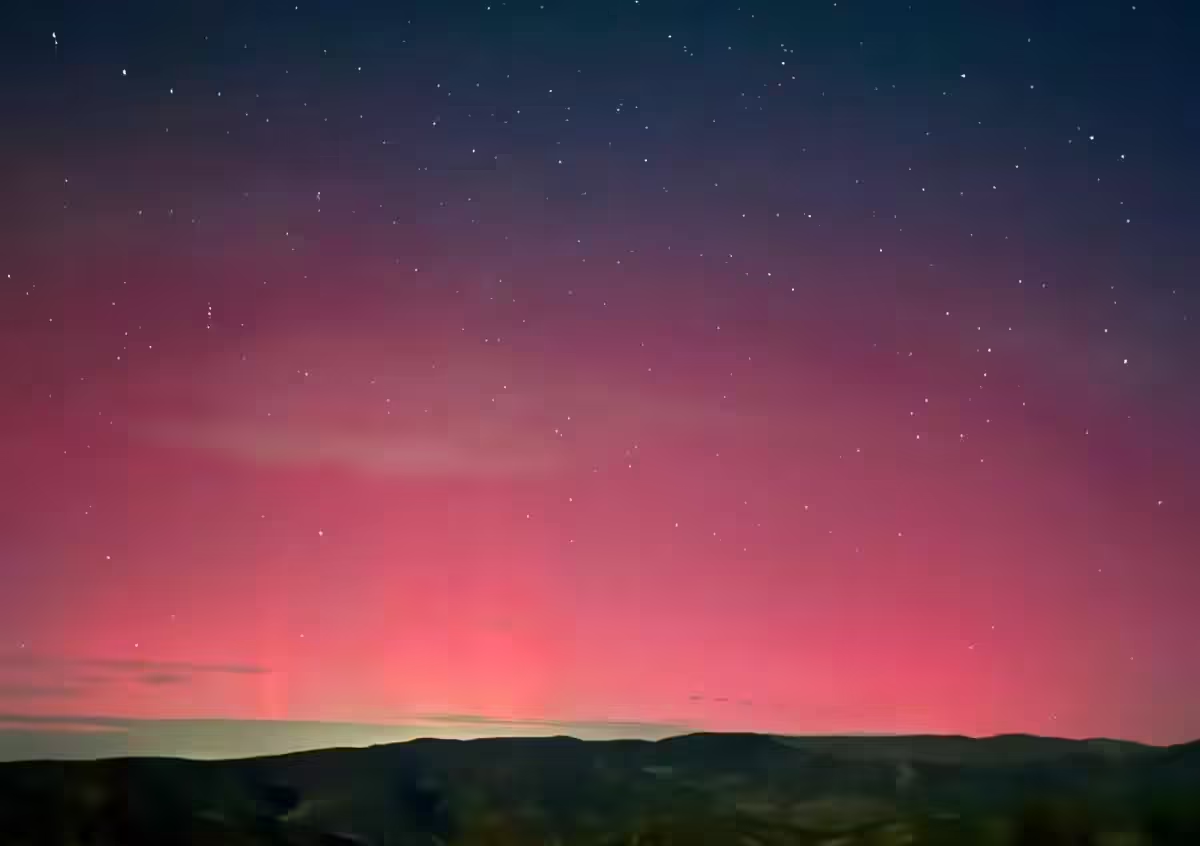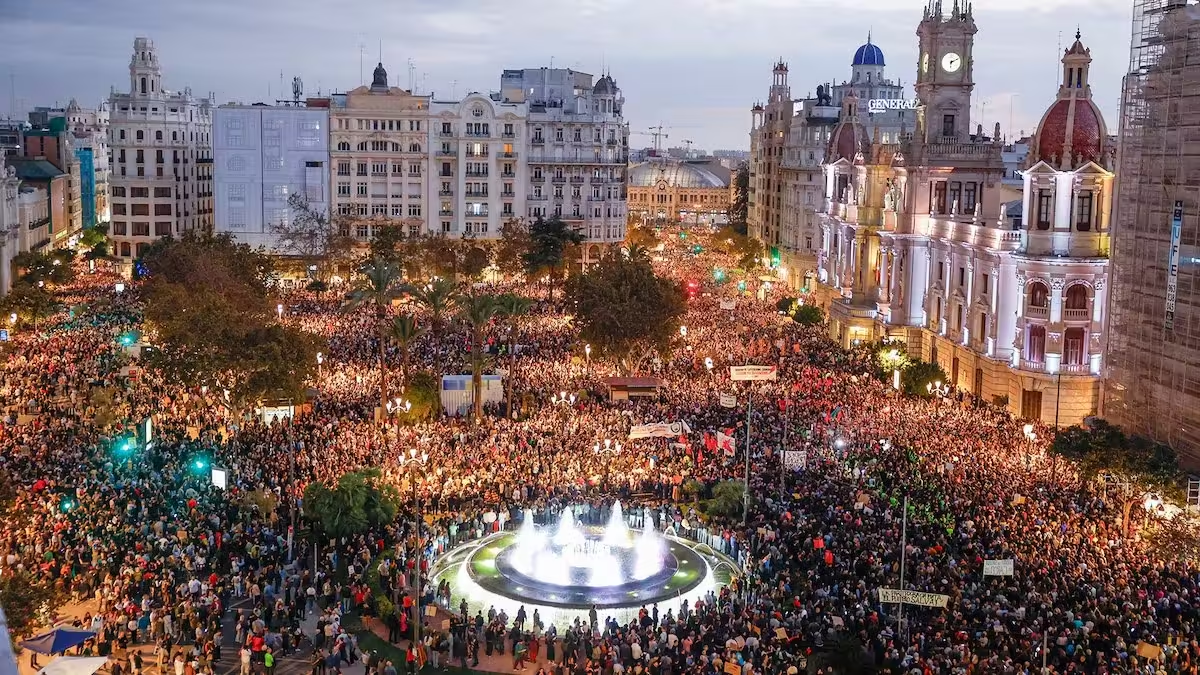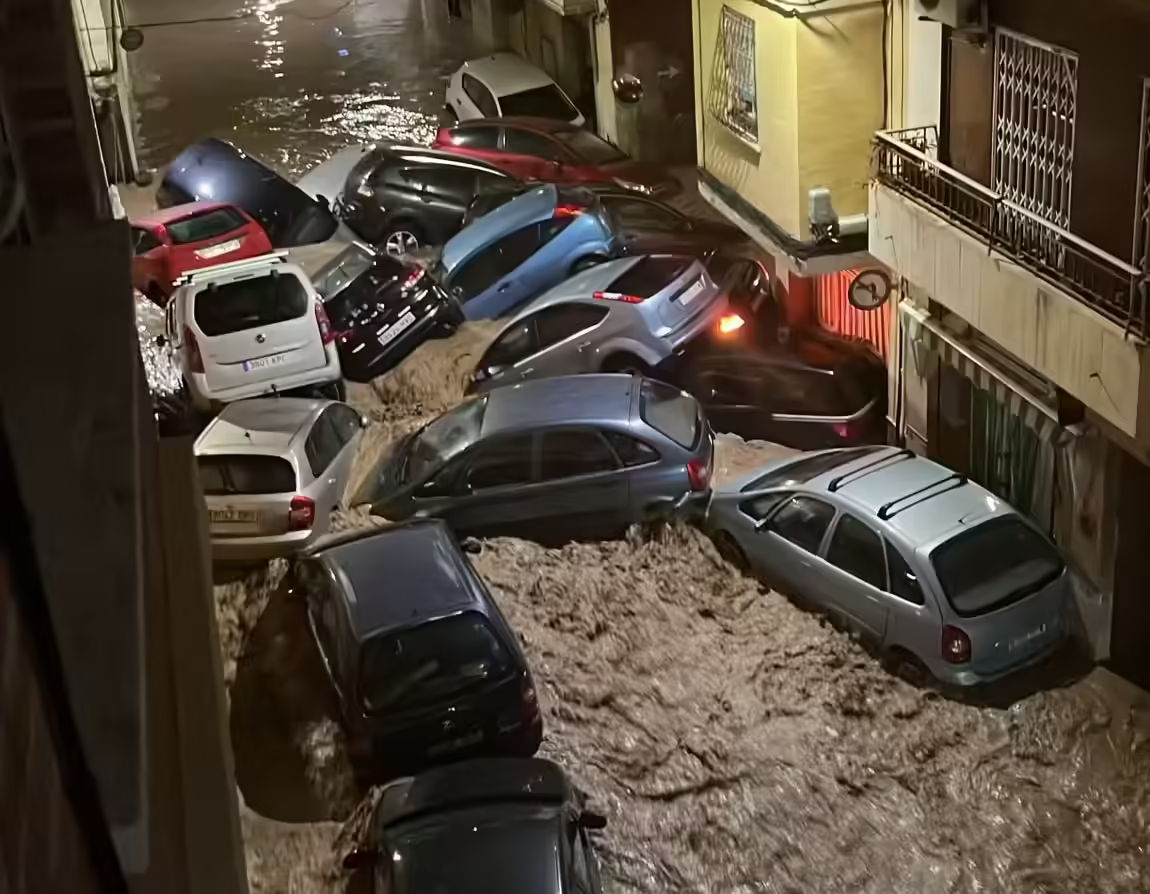Stunning Aurora Borealis Lights Up Spain
A breathtaking aurora borealis dazzled star gazers across Spain on the night of October 10. It came as a surprise to many as this spectacular event is usually seen much farther north. Thanks to a strong solar storm, people in Cataluña, Madrid, Murcia, Granada, and Segovia caught glimpses of the northern lights. This marks the second time this year that this rare phenomenon has appeared in lower latitudes, with the first occurrence happening back in May.
What Are Auroras and How Do They Happen?
Aurora borealis are beautiful light displays that occur when solar wind interacts with Earth’s magnetic field. They typically appear as colorful arcs or curtains in the sky and are usually seen at altitudes of 90 to 150 kilometers. While they are most common near the poles, recent solar activity has allowed them to be spotted much farther south, even below 36° latitude. The latest solar flare, classified as X1.8, was one of the strongest observed in recent months, creating the perfect conditions for this stunning light show.
Why Are Solar Storms Important?
Solar storms occur when the sun is more active, which happens in cycles of about 11 years. We are currently approaching the peak of Solar Cycle 25, expected in 2025. During these active periods, solar flares and coronal mass ejections release charged particles that can travel toward Earth, colliding with atoms in our atmosphere. These collisions cause the dazzling lights of the aurora borealis, making for a spectacular display.
A Night to Remember Across Spain
The excitement began on the evening of October 10 when experts warned of a powerful solar storm. As night fell, the skies in various Spanish regions transformed into a canvas of green, pink, and purple hues. The best views were found in rural areas, away from the bright lights of cities. Social media lit up with photos shared by thrilled observers in places like Segovia, Menorca, and Valencia, all eager to capture the magic of this rare event.
¡Histórico! Esta pasada madrugada (11/10/2024), #AuroraBoreal desde Observatorio Astronómico #CalarAlto (#Almería), a 2168 msnm. Fenómeno inusual en latitudes tan bajas, pero ya se ha contemplado 2 veces este #Año2024: el 10-11 de mayo y el 10-11 de octubre. Vídeo: @ObsCalarAlto. pic.twitter.com/myl8WSJsL1
— MeteOrihuela (@MeteOrihuela) October 11, 2024
Global Sightings of the Aurora Borealis
Spain wasn’t the only place to witness this stunning display; many regions across Europe and North America reported seeing the auroras too. The geomagnetic storm reached a level of G4 on the NOAA scale, with some areas even flirting with G5, which allowed for visibility far south of the usual ranges. While these storms create beautiful skies, they can also disrupt satellite communications and GPS signals, reminding us of the powerful forces at play.
What’s Next for Aurora Borealis Fans?
Although the peak of this storm has passed, there are likely to be more chances to see aurora borealis in the upcoming months. Astronomers advise sky watchers to head to rural areas or national parks where light pollution is low. With a new moon on the horizon, the darkness of the night will enhance visibility.
Tips for Catching the Next Aurora
If you’re eager to witness the aurora borealis in Spain, aim for remote areas away from city lights. Keep an eye on weather forecasts and geomagnetic activity updates, which can guide your aurora-chasing adventures. With solar activity on the rise, there’s a good chance you might catch another stunning light display soon!
Let us know what you think in the comments…
Thank you so much for your support! Reach out to us on Facebook and Instagram
For those interested in relocating to Spain we have created a Facebook Group How to Move to Spain to help you throughout the process. We will provide helpful free printables to keep you on track, online events to inform and support your journey, and above all create a community where you can ask questions and get advice. Please feel free to join!
Main image: X/Aras de los Olmos@ArasdelosOlmos1
Share this content:




1 comment